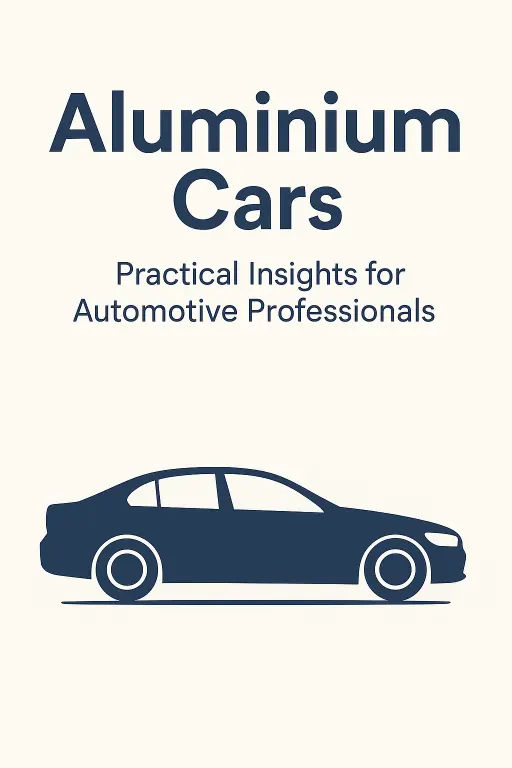Aluminium Cars: Practical Insights for Automotive Professionals
Aluminium cars—once a niche innovation—are now widely adopted in modern vehicle design for their strength-to-weight benefits. For engineers, buyers, and decision-makers in the automotive supply chain, understanding aluminum cars is essential when selecting materials, evaluating designs, or sourcing aluminum automotive components. This article offers Aluminium Cars: Practical Insights for Automotive Professionals, helping you make informed decisions across design, engineering, and procurement.
This article answers common questions about aluminium cars, with practical insights and examples to support your sourcing and development decisions.
What Are Aluminium Cars?
Aluminium cars refer to vehicles that use aluminum extensively in their structural frame, body panels, or key components such as the engine housing, battery enclosures, or suspension systems. Instead of traditional steel, these vehicles rely on aluminum automotive components to achieve lightweight, high-efficiency designs.
Why Use Aluminium in Cars?
The automotive industry uses aluminum for the following reasons:
- Weight Reduction: Aluminum is about 30–50% lighter than steel, improving fuel efficiency and electric vehicle range.
- Corrosion Resistance: Aluminum naturally resists rust, which enhances part longevity, especially in harsh climates.
- Improved Performance: Lighter vehicles have better acceleration, braking, and handling.
- Sustainability: Aluminum is fully recyclable, supporting circular manufacturing models.
Which Cars Are Made of Aluminium?
Several high-profile vehicles are made almost entirely from aluminum or feature significant aluminum content:
| Brand / Model | Aluminum Usage |
| Tesla Model S / X / 3 | Body panels, chassis, battery housing |
| Audi A8 | All-aluminum body structure |
| Jaguar XE / F-PACE | Aluminum intensive platform (iQ[Al]) |
| Ford F-150 (New Gen) | Military-grade aluminum alloy body panels |
Are Aluminium Cars Good?
Yes—aluminium cars are highly valued for performance and efficiency. Here are the key benefits:
- Fuel & Energy Savings: Lightweight materials lead to better mileage.
- Durability: Resistant to road salts and moisture, minimizing long-term maintenance.
- Lower Emissions: Reducing vehicle weight directly lowers CO₂ emissions.
In a North American SUV project, Welleshaft supplied aluminum cooling plate assemblies that reduced thermal mass and improved battery cooling, contributing to vehicle range and reliability.
Common Concerns About Aluminium Cars
Do Aluminium Cars Rust?
No. Unlike steel, aluminum forms a natural oxide layer that protects it from corrosion. This makes aluminum ideal for coastal, snowy, or high-moisture environments.
What Are the Disadvantages of Aluminium Cars?
- Higher Material Cost: Aluminum alloys are more expensive than steel.
- Repair Complexity: Aluminum panels require special tools and skills for bodywork and welding.
- Lower Impact Absorption: While aluminum is strong, it deforms differently than steel in crashes, requiring careful design.
Are Aluminium Cars Harder to Manufacture?
Aluminum requires specialized forming and joining techniques (e.g., riveting, bonding instead of welding). However, with the right supplier—like [Welleshaft’s expertise in aluminum automotive components]—these challenges are well managed.
Comparing Materials: Aluminum vs. Others
| Material | Weight | Corrosion Resistance | Cost | Safety Performance |
| Aluminum | Low | Excellent | High | High (well-designed) |
| Steel | High | Moderate (with coating) | Low | High |
| Plastic | Very Low | Varies | Low | Low (for structure) |
Is Aluminum Better Than Steel?
For efficiency and corrosion resistance, yes. But for crash safety and cost, steel still has advantages in certain applications. Many modern cars use a hybrid approach—aluminum for body and non-critical structures, steel for the chassis.
Is Aluminum Safer Than Plastic?
Yes. Aluminum is far stronger and more rigid than plastic. It also offers better thermal properties, making it safer for electric vehicle applications like battery enclosures.
Bonus: Are Tesla Cars Made of Aluminum?
Yes. Tesla uses aluminum extensively across its fleet. The Model S and Model X are known for having aluminum-intensive architecture, especially in the chassis and body panels. This improves performance and energy efficiency.
What Are the Components of Aluminum?
Common aluminum grades in automotive applications include:
- 6061 / 6063: Great for structural applications and cooling components.
- ADC12 / A356: Ideal for die castingmotor housings, brackets, and structural components.
- 3003 / 5052: Common in battery housing and panels.
Want to explore these in action? Visit our detailed guide: [aluminum automotive components].
Final Thoughts
Aluminium cars offer a high-performance, sustainable solution for the automotive industry. While they come with cost and repair challenges, they provide unmatched advantages in weight, corrosion resistance, and efficiency.
If you’re sourcing aluminum auto parts or developing lightweight platforms, partnering with a reliable supplier is key.
Need precision aluminum parts for your project?
Contact Welleshaft today to explore how our custom machining and casting services can drive your next innovation forward.
Related Pages:
Aluminum Automotive Components
Precision CNC Machining Services
Let me know if you’d like me to add illustrations, diagrams, or convert this to a web layout!

